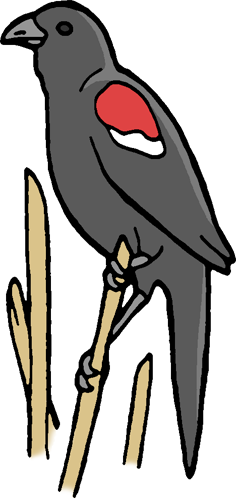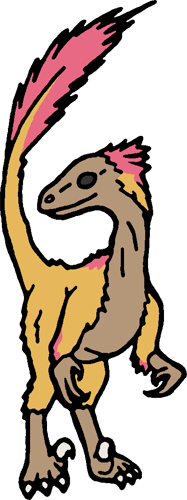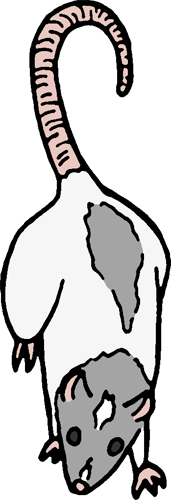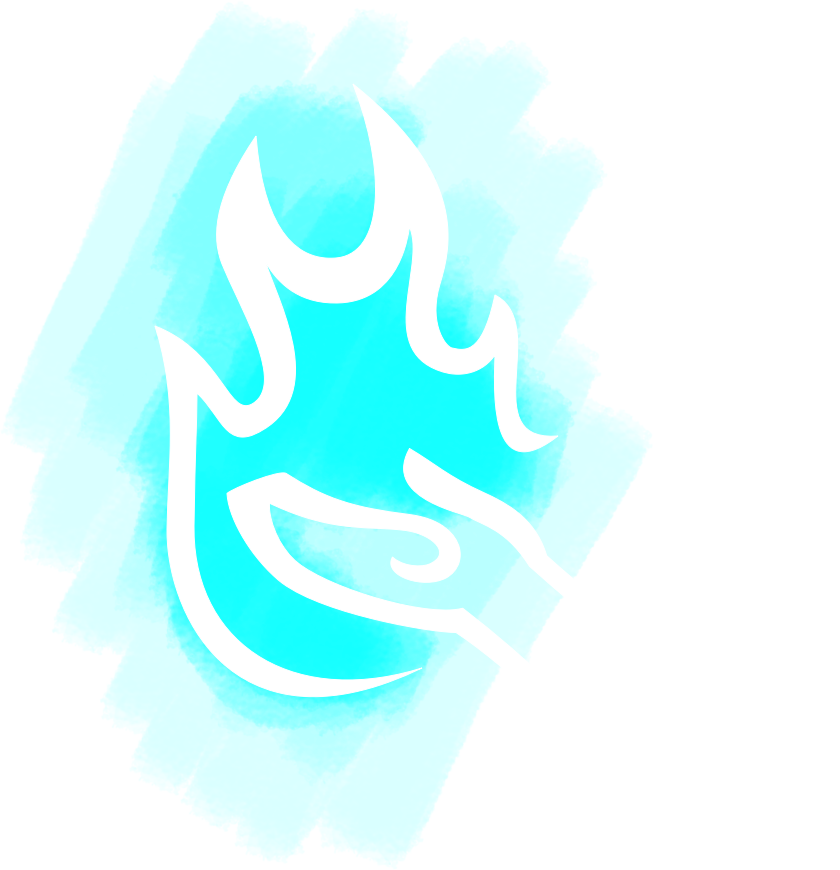I'm a linguist by training, so naturally, I love making conlangs. A conlang (if you didn't know) is a constructed language, like Esperanto or Klingon. Some of mine are pretty fleshed out, but I won't bore anyone with all those gritty linguistic details; instead I've just put some of my naming languages on this page. Naming languages are conlangs that are just developed enough to create consistent-sounding character and place names, and I've even made little random name generators for mine!
Intro to Conlangs - for anyone not familiar with them
Ziakien - a naming language for the world of Dust & Lightning
Etliruset & Veiksa - a contrasting pair of naming languages for Gods of Bloodied Earth
Portside Creole - a future creole for Sync
Intro to Conlangs
Curious, but don't know what you're looking at? Let me try to give you a crash course. Experienced conlangers & linguists, move along!
Linguists often break languages down into phonology (the sounds), morphology (the words), syntax (the sentences), and semantics (the meaning). A full-fledged conlang will develop all of these, but a naming language will mostly just be phonology, so that's what I'll talk about here.
It's often handy to organize the sounds of a language into tables. I've done that for English below. Sounds are represented with characters from the International Phonetic Alphabet (IPA), which is designed to be able to transcribe any human language. We can put IPA symbols in slashes or square brackets, /k/ or [k], depending on whether we're talking about psychological units of sound in a given language (phonemes) or about exact pronunciations. We also use angled brackets, ‹k›, for orthography, how sounds are commonly written. In the English tables, I put the most common English spelling of each sound in angled brackets; in the tables for my conlangs, the angled brackets show how I've decided to spell that sound in character names and the like. In many cases, the IPA symbol is the same as the English letter, but not always.
Consonants
The rows of the table are the manner of articulation (how the sound is made) and the columns are place of articulation (where in the mouth it's made). Manner goes from "hard" sounds like /k/ to progressively "softer" sounds like /m/, and place goes from the front of the mouth (the lips) backward to teeth, tongue, and down into the throat. Besides manner and place, the other big thing that distinguishes sounds is voicing, which refers to the vibration (or not) of the vocal folds. In each box in the table, if there are two sounds, the first one is voiceless (no vibration), and the second is voiced. You can feel the difference really well with the fricatives if you say them both with your hand on your throat. The two glottal sounds are considered voiceless (they're special), and otherwise, if there's only one sound in a box, it's voiced.
| labial | interdental | alveolar | post-alveolar | palatal | velar | glottal | |
|---|---|---|---|---|---|---|---|
| stops | p ‹p›, b ‹b› | t ‹t›, d ‹d› | k ‹k›, g ‹g› | ʔ ‹*› | |||
| affricates | tʃ ‹ch›, dʒ ‹j› | ||||||
| fricatives | f ‹f›, v ‹v› | θ ‹th›, ð ‹th› | s ‹s›, z ‹z› | ʃ ‹sh›, ʒ ‹**› | h ‹h› | ||
| nasals | m ‹m› | n ‹n› | ŋ ‹ng› | ||||
| rhotics | ɹ ‹r› | ||||||
| laterals | l ‹l› | ||||||
| glides | j ‹y› | w ‹w› | |||||
*This is the sound in the middle of "kitten" (at least in some dialects of American English) and "uh-oh;" you can sort of feel it in your throat. Conlangers often spell this with an apostrophe.
**This is the sound in the middle of words like "vision" and "fusion." You might also have it on the end of "garage" or "rouge," or the beginning of "genre." Conlangers often like "zh" for it, because it has the same relationship to "z" that "sh" has to "s."
And yes, there really are two different sounds spelled "th"! Compare "thigh" (the first one, voiceless) and "thy" (the second one, voiced). Sometimes you'll see conlangers spell the second one as "dh."
Vowels
Vowels are a little messier than consonants, but we can generally think of them according to how the tongue is positioned when we make them: is it high or low, forward or back? Other things that can come into play for vowels are lip roundness, length, and nasalization. English spelling isn't especially illuminating when it comes to vowels, so I've given an example word for each vowel in the table below. I'm working with Standard American English here; if you speak another dialect, your vowels may vary!
| front | central | back | |
|---|---|---|---|
| high | i ‹beet› | u ‹boot› | |
| mid-high | ɪ ‹bit› | ʊ ‹book› | |
| mid | e/ej ‹bait› | ə ‹*› | o/ow ‹boat› |
| mid-low | ɛ ‹bet› | ʌ ‹but› | ɔ ‹bought› |
| low | æ ‹bat› | ɑ ‹bot› |
*We only have this vowel in unstressed syllables, so, for instance, the first syllable of "about."
(If "bought" and "bot" sound the same to you, you probably want /ɑ/, not /ɔ/.)
We also have some diphthongs, which are vowels that are actually two different vowel sounds glided together. "Bait" and "boat," in many American dialects, are examples of this, /ej/ and /ow/ respectively, and we also have a few more extreme diphthongs: /aj/ "bite," /aw/ "bout," and /ɔj/ "boy." (People often write diphthongs with two vowel characters: /eɪ oʊ aɪ aʊ ɔɪ/. I tend to use a glide, partly because it emphasizes which part of the diphthong is more or less prominent and partly because the glide letters are right there on my keyboard.)
Phonotactics & Stress
What consonants and vowels are present in a language is only half of what gives that language its distinctive sound. The other half is how those consonants and vowels fit together into syllables and words. Consider two made-up words: "prack" and "pnack." Neither is a real English word, but one of them could be, and the other couldn't. This issue of how sounds can fit together is called "phonotactics." There are a few main phonotactic things I usually consider for my conlangs: codas, clusters, vowel hiatus, co-occurrence restrictions, and stress patterns.
Codas: A coda is a consonant at the end of a syllable, like the "t" in "cat." Not all languages allow this! And even many that do only let a certain subset of their consonants be codas. In English, for instance, most consonants can be a coda, but not /j w h ʔ/. Less commonly, some languages have a sound or two that can only be codas; in English, /ŋ/ is never at the beginning of a word.
Clusters: A cluster is when you have multiple consonants together without a vowel between them. Once again, not all languages allow this, and when they do, there are usually restrictions on what kinds of clusters are allowed. In English, we can have /pɹ/ but not /pn/, /stɹ/ (e.g., "stream") but not /ftɹ/, etc. Clusters don't have to be at the beginning of the syllable; we can also have coda clusters, like the "rt" in "art." English allows a lot of consonants to cluster up in a single syllable as long as they're the right ones—think words like "squints" /skwɪnts/, "twelfths" /twɛlfθs/, or "strengths" /stɹeŋkθs/.
Vowel hiatus: This is when you have multiple vowels (that aren't just diphthongs) together without a consonant between them, like in "via." Not all languages like this, either.
Co-occurrence restrictions: Sometimes there are specific sequences of sounds that languages just don't like, often because those sounds are too similar to each other or otherwise difficult to pronounce together. For instance, American English lacks /tj/ and /dj/ clusters, even though it has other stop+/j/ clusters (like /kj/ in "cue"), but British English does have /tj dj/ (in words like "tune").
Stress: This is which syllable of a word has the emphasis. Trochaic stress (more common in English) is when the first of a pair of syllables is stressed, like in "vision," and iambic stress is the opposite, like in "revise." In some languages, stress is very systematic, and in others it's unpredictable. Sometimes it's what we call "weight-sensitive," which means that "heavier" syllables (basically, ones with more sounds in them) are more likely to be stressed; and some languages don't really have stress at all, but do other things like pitch-accent or tone that I'm not going to try to explain, or we'd be here all day!
Phonotactics can make a huge difference for how a language sounds. A language that allows CCCVCCCC syllables like English does will sound very different from one where all the syllables are CV, even if they have exactly the same consonants and vowels.

Ziakien - Dust & Lightning
This is the naming language for most of the characters in a Haudenosaunee-coded fantasy setting, so I took some inspiration from the Iroquoian languages. If we're being completely honest, though, I built this language a little backwards. I knew what I wanted some of the characters' names to be (like Chael and Sal) from the very beginning, so then I had to build the conlang around those names, to be able to come up with more that would look and sound like they matched.
Consonants
The absence of labial consonants (/p b f v m/) is a distinctive trait of Iroquoian languages.
| alveolar | palatal(ish) | velar | glottal | |
|---|---|---|---|---|
| occlusives | t ‹t›, d ‹d› | tʃ ‹ch›, dʒ ‹j› | k ‹k› | ʔ ‹'› |
| fricatives | s ‹s›, z ‹z› | h ‹h› | ||
| nasals | n ‹n› | |||
| approximants | ɹ ‹r›, l ‹l› | w ‹w› | ||
Vowels
The vowel inventory resembles Kanien'kéha (Mohawk) and Onʌyota'a:ka (Oneida). The vowels with tildes on them, /ʌ̃ ũ/, are nasalized; these are vowels made with air flowing through the nose, and can be found in languages like French and Burmese as well as many Native American languages.
| i~ij ‹i› | ũ~õ ‹on› | |
| e~ej ‹ae› | ə ‹a›, ʌ̃~n̩ ‹en› | o~ow ‹o› |
| a~æ ‹a› | ||
| diphthongs: aj ‹y› | ||
Oral monophthongs often become diphthongs (gaining off-glides) when stressed. /a/ sometimes has a fronted pronunciation before /l/ (which is always light); this is mostly because I wanted to have a character named Sal, not Saul.
Phonotactics & Stress
| codas: | yes: liquids and /h/, only after non-high oral monophthongs /e o a/ |
| clusters: | no |
| hiatus: | yes |
| restrictions: | no geminates; /ʔ/ only occurs intervocalically; in hiatus, nasal vowels can follow oral ones, but not vice versa |
| stress: | irregular, weight-sensitive |
Names
Names are usually of the form [given name] of [X], where X might be one's clan, bloodline, city, and/or nation, depending on demographics and context. There's no particular phonological pattern that's common to given names, but some families have their own patterns.
Some character names: Chael, Salziah (Sal), Tonalen, Zahaniol, Jyza

Etliruset & Veiksa - Gods of Bloodied Earth
For this world, I wanted two naming languages to make very different-sounding names. So Etliruset and Veiksa are opposed in many ways. Overall, Etliruset has a crisper sound to it, with short vowels and lots of codas. The voiced obstruents and open vowels of Veiksa make it a little doughier—until you hit some of the clusters. Those give it a nice edge, I think.
I combined the two conlangs in the tables below, so it's easy to compare them. Etliruset is in black (upper rows of consonants and phonotactics, left set of vowels) and Veiksa is in outlined purple (lower rows, right set of vowels).
Consonants
Etliruset lacks voiced obstruents (/b d g v z/ etc.), and includes a few voiceless ones that we don't have in English, /ts ɬ tɬ x/. /ts/ is similar to English "ch." /ɬ/ and /tɬ/ are lateral obstruents, similar to /l/ but with noisier, more turbulent airflow; sounds like these can be found in a number of Native American languages, like Nahuatl and Navajo. And /x/ is a velar fricative; you might be familiar with it as that throaty "h" sound in a lot of German, Hebrew, or Scots words, where it's often spelled ‹ch›, and it's also common in Mayan languages.
By contrast, Veiksa contains no sounds that aren't found in English, and has voiced counterparts to all of its voiceless oral obstruents. What it's missing (because I often make naming languages that are missing something from English; what's missing can be as distinctive as what's there) is the post-alveolars: /tʃ dʒ ʃ ʒ/.
| labial | alveolar | lateral | palatal(ish) | velar | glottal | |
|---|---|---|---|---|---|---|
| stops | p ‹p› | t ‹t› | k ‹c/k› | ʔ ‹'› | ||
| p ‹p›, b ‹b› | t ‹t›, d ‹d› | k ‹k›, g ‹g› | ||||
| affricates | ts ‹tz› | tɬ ‹tl› | ||||
| [none] | ||||||
| fricatives | s ‹s› | ɬ ‹lh› | ʃ ‹x› | x ‹j› | h ‹h› | |
| f ‹f›, v ‹v› | s ‹s›, z ‹z› | h ‹h› | ||||
| nasals | m ‹m› | n ‹n› | ŋ ‹ng› | |||
| m ‹m› | n ‹n› | |||||
| approximants | ɾ ‹r› | l ‹l› | j ‹y› | w ‹w› | ||
| ɹ ‹r› | j ‹y› | |||||
/k/ in Etliruset is usually spelled with ‹c›, but uses ‹k› instead when it's followed by ‹i› or ‹e›.
The spellings ‹tz› for /ts/, ‹x› for /ʃ/ (typically "sh" in English), and ‹j› for /x/ (or /χ/) are common in Mayan languages.
Vowels
Etliruset and Veiksa both have fairly simple vowel inventories. (I usually avoid large or complex vowel systems for naming languages, because there's only so much you can do with English orthography.) Nevertheless, the presence of diphthongs and digraphs in Veiksa makes its vowels feel longer and more flowing, while monographs and codas make Etliruset's vowels read as short and lax.
| i~ɪ ‹i› | u~ʊ ‹u› | i ‹i› | u ‹u› | |||
| ɛ ‹e› | o ‹o› | e ‹ei› | ʌ~ə ‹a› | |||
| ɑ ‹a› | a ‹a› | |||||
| no diphthongs | aj ‹ai›, aw ‹au› | |||||
Phonotactics & Stress
Opposites again, Etliruset makes frequent use of obstruent codas while Veiksa lacks codas entirely. Etliruset also allows geminates word-internally. (A geminate is an extra-long consonant, or two of the same consonant right next to each other.) Veiksa instead allows a variety of consonant clusters at the beginning of a syllable, including some that English doesn't even like, like /ks/ and /bz/. Finally, they differ in stress patterns, with Etliruset being iambic and Veiksa trochaic.
| codas: | yes: any consonant except glides |
| no | |
| clusters: | no |
| yes: stop+sonorant, stop+fricative, nonsibilant fricative+approximant | |
| hiatus: | no |
| no | |
| restrictions: | none |
| /ji tj dj/ sequences are disallowed | |
| stress: | final in disyllables, varies in trisyllables |
| initial/trochaic |
Names
Etliruset people generally just have one name, and thanks to details about their culture and matters of reincarnation, their names are almost always gender-neutral.
Some Etliruset character names: Yexet, Roketz, Uretlec, Xerutzar
Veiksa names are more gendered, and this is mostly in the vowels. Names with "ai" and "au" are usually masculine, and names with "i" and "ei" are usually feminine, though there are exceptions. The full name will include a patronymic as well as the given name.
Some Veiksa character names: Ksaizu, Ibzu, Damabai, Prauva

Portside Creole - Sync
This conlang is unlike the others in a couple big respects. For one, it's not for a secondary world (a world that has no connection to real Earth); Sync is just set in the future. For another, I normally favor simplicity in naming languages and make a point of leaving out something that's common in English, rather than just adding new things in, but with this one I was very much just combining bits and pieces of everything. Portside Creole is what it sounds like: an eclectic creole spoken as a lingua franca among diverse traders and travelers, mainly drawing on Hindi, Arabic, Burmese, and English.
Consonants
You can see Hindi in the retroflexes /ʈh ʈ ɖ ɽ/, Burmese in the voiceless/aspirated nasals /hm hn hŋ/, and Arabic in the pharyngealized consonants /tʕ dʕ sʕ zʕ/.
| labial | dental | alveolar | retroflex | palatal(ish) | velar | uvular | glottal | |
|---|---|---|---|---|---|---|---|---|
| occlusives | th ‹ht› | ʈh ‹htt› | tʃh ‹ch› | kh ‹hk› | ||||
| p ‹p› | t ‹t›, tʕ ‹t'› | ʈ ‹tt› | tʃ ‹ch› | k ‹k› | q ‹q› | (ʔ) | ||
| b ‹b› | d ‹d›, dʕ ‹d'› | ɖ ‹dd› | dʒ ‹j› | |||||
| fricatives | f ‹f› | θ~ð ‹th› | s ‹s›, sʕ ‹s'› | ʃ ‹sh› | x~χ ‹x› | h ‹h› | ||
| z ‹z›, zʕ ‹z'› | ʒ ‹zh› | |||||||
| nasals | hm ‹hm› | hn ‹hn› | hŋ ‹hng› | |||||
| m ‹m› | n ‹n› | ŋ ‹ng› | ||||||
| approximants | ʋ~w ‹v› | ɹ ‹r›, l ‹l› | ɻ ‹rr› | j ‹y› | ||||
Aspirated nasals only occur word-initially. Similarly, the three-way stop contrast is only preserved word-initially; word-internally, it reduces to a two-way contrast. /θ/ is voiced intervocalically.
/ph/ got overtaken by /f/. Coda /ɽ/ is written ‹r›. In clusters, /ʋ/ is always realized as [w] and is spelled ‹w› rather than ‹v›.
Vowels
There's a lot of variation in the vowels of Portside Creole, and to write them, I resorted to something I normally avoid in conlangs: the digraphs ‹ee› and ‹oo›. I figured it made sense this time because, after all, this language is actually related to English with all its ridiculous orthography, and because these spellings are commonly used in Romanizing Hindi words already.
| i:~i ‹ee› | u:~u ‹oo› | |
| i~ɪ ‹i› | u~ʊ ‹u› | |
| e~ɛ ‹e› | ʌ~a ‹a› | o~ɔ ‹o› |
| æ ‹a› | a:~ɑ ‹aa› | |
| diphthongs: ʌj ‹ai› | ||
Portside Creole shares English's constraint against word-final short/lax vowels, so word-final /i: u:/ are just spelled ‹i u› rather than with the digraphs.
Phonotactics & Stress
| codas: | yes: any consonant except /tʃh tʃ dʒ f ʋ r j h ʔ/; voicing distinctions are neutralized |
| clusters: | yes: in onset, /s ʃ/+stop/nasal+/ʋ ɹ/; in codas, stop+/s ʃ/ and /n/+/t k θ s/; except retroflex stops and voiceless nasals |
| hiatus: | no |
| restrictions: | /wu wʊ ji jɪ/ sequences are disallowed, as well as /pʋ bʋ/ clusters and word-final /ɪ ʊ/ |
| stress: | irregular, weight-sensitive |
Names
The character names in Sync are a mixed bag. Most characters have real names (from a number of different languages/cultures), but a fair few have invented names, because hey, it's the future, why shouldn't there be cool new names? Place names are similarly varied: some are English (Greengod), some are named after places on Earth (New Chennai), and some are invented.
Some invented character & place names: Jaksa, Kamaaksh, Hmokri, Ivathnas, Sanadan (/sʌnʌdʌn/, not /sænʌdæn/)
Take care with the random name generator on this one. The sheer number of different sounds and the complexity of syllables in this conlang mean you're bound generate some laughably bad names. (A favorite from when I was testing it: Spamrat.) But you'll also get some nice ones mixed in.
© Riley Neither
